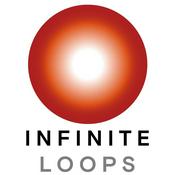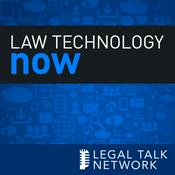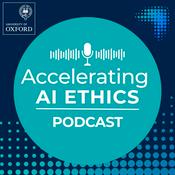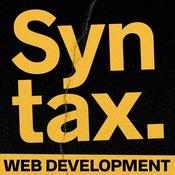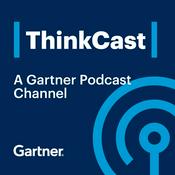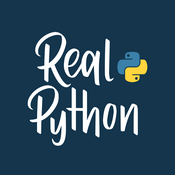81 episodes

Interview #81 Vrajesh Bhavsar, CEO of Operant AI
2026/1/01 | 33 mins.
Join Vrajesh Bhavsar, CEO of Operant AI, as he reveals the emerging threat landscape facing production AI systems, from sophisticated prompt injection attacks to zero-click exploits that can exfiltrate sensitive data without any user interaction. Bhavsar explains how traditional security tools like code scanning, network firewalls, and cloud security posture management become largely ineffective against AI agents operating with non-deterministic behavior and authorized access to critical systems, requiring runtime security solutions that function as AI-layer firewalls. He discusses the Shadow Escape attack class discovered by Operant targeting Model Context Protocol (MCP) servers, where the rapid proliferation of 20,000 mostly open-source MCP servers creates dangerous shared memory spaces across disparate API endpoints, enabling data poisoning and exfiltration at scale while traditional security teams remain blind to these agent-to-agent interactions happening within the "cloud within the cloud."

Interview #80 Raj Shukla, CTO of SymphonyAI
2025/12/19 | 43 mins.
Join Raj Shukla, CTO of SymphonyAI, as he discusses the critical distinction between AI demos and production-ready systems, revealing that enterprises consistently underestimate the "last mile" challenges of authentication, authorization, and data scalability that break POCs when moving to production. Shukla explains how SymphonyAI's vertical AI approach pre-trains models on industry-specific ontologies and knowledge graphs for retail, financial services, industrial manufacturing, and enterprise IT, enabling faster ROI by providing pre-built agents and domain-specific context rather than expecting generic LLMs to solve everything. He addresses the hidden costs that shock CFOs—not LLM inference which has dropped 1000x, but the expensive work of making data and APIs AI-ready through proper governance layers and MCP server implementations, while warning that enterprises overestimate the autonomy achievable in the short term and underestimate the infrastructure work required for real process automation at scale.

Interview #79 Balaji Raghavan, Head of Engineering at Postman
2025/12/01 | 31 mins.
Join Balaji Raghavan, Head of Engineering at Postman, as he discusses the critical gap between AI adoption and API readiness, revealing that while 80% of developers use AI, only 24% design APIs with AI agents as the intended consumer. Drawing from Postman's 40 million developer user base, Raghavan explains how human-designed APIs create ambiguity problems for AI systems, requiring additional tooling layers that often introduce security vulnerabilities through proxy credentials and unauthorized access risks. He addresses the uncomfortable reality that the industry is still in early stages of making AI reliably call APIs at scale, with hallucinations and context limitations preventing effective orchestration across hundreds of endpoints, while warning that judicious leaders must distinguish between deterministic flows and cases where expensive AI-based approaches are truly necessary to manage infrastructure costs and prevent cascade failures.

Interview #78 Stelios Diamantidis, CPO of Cognichip
2025/10/15 | 31 mins.
Join Stelios Diamantidis, Chief Product Officer at Cognichip, as he explores how artificial intelligence is revolutionizing semiconductor development by enabling more holistic design processes that can reduce development time by half and costs by 75%. He discusses how AI tackles complex challenges across the entire chip design workflow—from early product definition through manufacturing—including verification, debugging, and hardware-software co-design optimization. Diamantidis envisions a near future where AI agents serve as true co-designers, helping engineers navigate the complex trade-offs between performance, power efficiency, and chip area while enabling rapid creation of bespoke accelerators tailored to specific AI workloads.

Interview #77 Paul Canetti, CEO of Skej
2025/10/10 | 38 mins.
Join Paul Canetti, CEO of Skej, as he discusses the unique challenges of building AI products that operate without traditional user interfaces, instead functioning as virtual humans with email addresses, phone numbers, and Slack handles that interact through natural language. Drawing from his experience in UX design at Apple during the iPhone era, Canetti explains how building non-deterministic AI systems fundamentally differs from traditional software, requiring multiple quality assurance layers to prevent hallucinations and ensure AI assistants know when to remain silent in group conversations. He explores the shift toward anthropomorphized AI assistants with distinct personalities, arguing that as forms become obsolete and natural language interfaces become mainstream, the future lies in liberating people to do uniquely human work while AI handles generic tasks that anyone could accomplish but everyone suffers through.
More Technology podcasts
Trending Technology podcasts
About The Artificial Intelligence Podcast
Listen to The Artificial Intelligence Podcast, Darknet Diaries and many other podcasts from around the world with the radio.net app

Get the free radio.net app
- Stations and podcasts to bookmark
- Stream via Wi-Fi or Bluetooth
- Supports Carplay & Android Auto
- Many other app features
Get the free radio.net app
- Stations and podcasts to bookmark
- Stream via Wi-Fi or Bluetooth
- Supports Carplay & Android Auto
- Many other app features


The Artificial Intelligence Podcast
download the app,
start listening.












